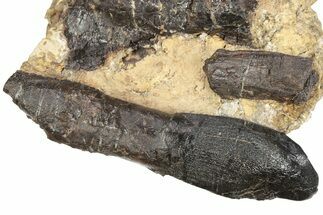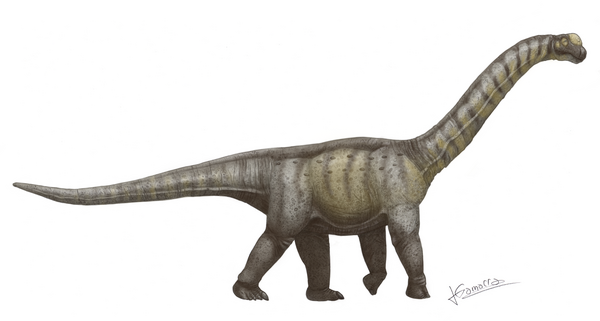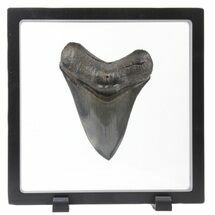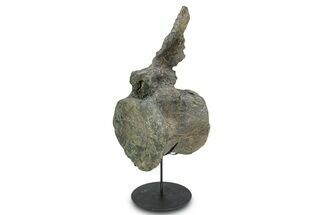This Specimen has been sold.
Sauropod Dinosaur (Camarasaurus) Tooth Tip - Colorado
This is a partial tooth of Camarasaurus, a giant sauropod dinosaur from the Morrison Formation. It had very distinctive teeth that were designed for eating coarse vegetation. There is some feeding wear visible at the top fo the tooth and it was prepared still partially embedded in the rock it was found in.
This tooth was collected this past summer from our partners private quarry East of Dinosaur, Colorado.
This tooth was collected this past summer from our partners private quarry East of Dinosaur, Colorado.
About Camarasaurus
Camarasaurus was a medium-sized sauropod dinosaur whose fossils are found in the Morrison Formation of the Southest United States. It is estimated to have reached lengths of up to 75 feet long and had an estimated maximum weight of around 50 tons. Compared to contemporary Diplodocids, it had a shorter tail, longer forelimbs, and a much larger and more robust skull.
Camarasaurus skulls are quite distinctive: they have blunt snout and quite a square shape. Camarasaurus had large, spoon-shaped teeth, unlike many sauropod dinosaurs that had small, peg-like teeth. This likely indicates that it ate coarser vegetation, allowing it to share the same environment as other sauropods without competing for food. It may have replaced its teeth approximately every 60 days as they became worn from chewing. Its cervical vertebrae had hollow chambers to reduce weight on the neck, leading to its name, which means “chambered lizard”.
Camarasaurus is considered the most abundant of the sauropod dinosaurs found in North America. Its fossils have been found in almost every major Morrison Formation dinosaur locality, with fossils found in localities from across many states including New Mexico, Utah, Colorado, Montana and Oklahoma.
Camarasaurus was a medium-sized sauropod dinosaur whose fossils are found in the Morrison Formation of the Southest United States. It is estimated to have reached lengths of up to 75 feet long and had an estimated maximum weight of around 50 tons. Compared to contemporary Diplodocids, it had a shorter tail, longer forelimbs, and a much larger and more robust skull.
Camarasaurus skulls are quite distinctive: they have blunt snout and quite a square shape. Camarasaurus had large, spoon-shaped teeth, unlike many sauropod dinosaurs that had small, peg-like teeth. This likely indicates that it ate coarser vegetation, allowing it to share the same environment as other sauropods without competing for food. It may have replaced its teeth approximately every 60 days as they became worn from chewing. Its cervical vertebrae had hollow chambers to reduce weight on the neck, leading to its name, which means “chambered lizard”.
Camarasaurus is considered the most abundant of the sauropod dinosaurs found in North America. Its fossils have been found in almost every major Morrison Formation dinosaur locality, with fossils found in localities from across many states including New Mexico, Utah, Colorado, Montana and Oklahoma.
SPECIES
Camarasaurus grandis
LOCATION
Dinosaurs Of America Quarry, Dinosaur, Colorado
FORMATION
Morrison Formation
SIZE
.8" wide, .5" long, rock 2.2x2
CATEGORY
SUB CATEGORY
ITEM
#169006
We guarantee the authenticity of all of our specimens.
 Reviews
Reviews















